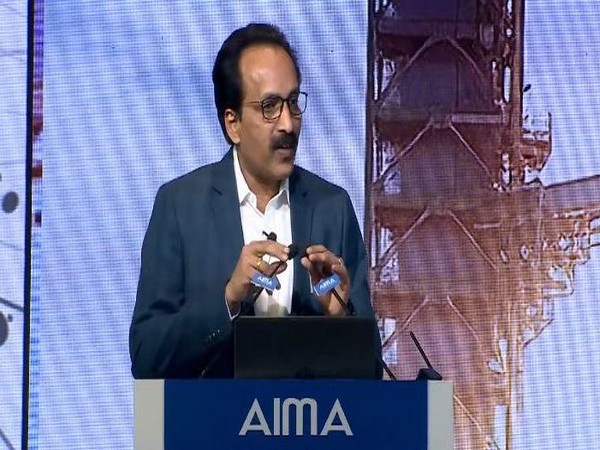
New Delhi: The Propulsion Module (PM) of the Chandrayaan-3 spacecraft, which was initially intended for lunar operations, was successfully returned to Earth's orbit by ISRO after exceeding its lunar mission objectives, demonstrating India's ability to not only launch objects to the Moon but also bring them back.
Following the lunar hop by Vikram (lander), this was another accomplishment that shows that ISRO can restart engines on the moon and operate equipment, both of which were not foreseen, the national space agency stated in a release.
"In another unique experiment, like the hop experiment on the Vikram Lander, the Propulsion Module (PM) of Chandrayaan-3 was moved from an orbit around the Moon to an orbit around Earth," the Indian Space Research Organisation (ISRO) stated in its official release.
The primary objective of the Chandrayaan-3, the country's first successful lunar landing mission, was to demonstrate a soft landing near the lunar south polar region and perform experiments using the instruments onboard the lander 'Vikram' and rover 'Pragyaan'.
The spacecraft was launched on July 14, 2023, on board the LVM3-M4 vehicle from SDSC, SHAR.
On August 23, Vikram Lander made its historic touchdown on the Moon and subsequently, the Pragyan rover was deployed to survey the uncharted lunar south pole.
The scientific instruments in the lander and rover were operated continuously for 1 lunar day as per the defined mission life, the ISRO stated in its release, adding that the mission objectives of Chandrayaan-3 have been completely met.
'With regard to the Propulsion Module, the main objective was to ferry the Lander module from GTO to the final lunar polar circular orbit and separate the Lander. Subsequent to separation, spectro-polarimetry of the HABITABLE Planet Earth (SHAPE) payload in the PM was also operated," the agency informed further.
The initial plan was to operate this payload for about three months during the mission life of PM. The precise orbit injection by LVM3 and optimal earth and lunar burn manoeuvres resulted in the availability of over 100 kg of fuel in the PM after over one month of operations in the lunar orbit, it added.
It was decided to use the available fuel in the PM to derive additional information for future lunar missions and demonstrate the mission operation strategies for a sample return mission, it stated, adding that to continue the SHAPE payload for Earth observation, it was decided to re-orbit the PM to a suitable Earth orbit.
This mission plan was worked out considering collision avoidance, such as preventing the PM from crashing on the Moon's surface or entering the Earth's GEO belt at 36,000 km and orbiting below that, the ISRO stated, adding that considering the estimated fuel availability and the safety of GEO spacecraft, the optimal Earth return trajectory was designed for October 2023.
"The first manoeuvre was performed on October 9, 2023, to raise the apolune altitude to 5112 km from 150 km, thus increasing the period of orbit from 2.1 hrs to 7.2 hrs. Later, considering the estimate of available propellant, the second manoeuvre plan was revised to target an Earth orbit of 1.8 lakh x 3.8 lakh km," the agency added.
The trans-earth injection (TEI) manoeuvre was performed on October 13, 2023. In the post-TEI manoeuvre realised orbit, the propulsion module made four moon fly-bys before departing Moon SOI on November 10, it added.
Currently, the propulsion module is orbiting Earth and crossed its first perigee on November 22nd with an altitude of 1.54 lakhs km. The orbit period is nearly 13 days with a 27-degree inclination, the ISRO informed.
The perigee and apogee altitude vary during its trajectory and the predicted minimum perigee altitude is 1.15 lakhs km. Hence, as per the current orbit prediction, there are no threats of close approach with any operational Earth-orbiting satellites, it added.
As per plan, the SHAPE payload is being operated whenever Earth is in its field of view. Also, a special operation of the SHAPE payload was carried out on October 28, 2023, during a solar eclipse, the agency informed, adding the Shape payload operations will continue further.
"UR Rao Satellite Centre/ISRO's flight dynamics team has developed an analysis tool from first principles for this operation, which is being validated through the return manoeuvres carried out for the Chandrayaan-3 PM," it added.
"The main outcomes of the return manoeuvres carried out on CH3 PM related to future missions include the planning and execution of a trajectory and manoeuvres to return from the Moon to Earth, the development of a software module to plan such a manoeuvre and its preliminary validation," it stated further.
It also includes the planning and execution of a gravity-assisted flyby across a planet or celestial body and avoiding the uncontrolled crashing of the PM on the moon's surface at the end of its life, thus meeting the requirements of no debris creation, the agency informed.